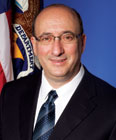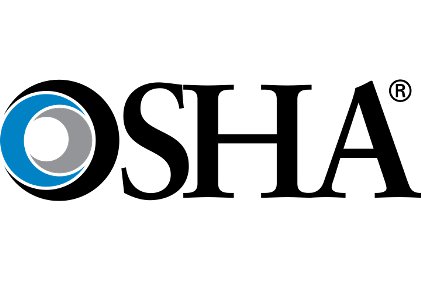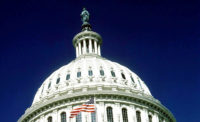 Remarks by Dr. David Michaels, Assistant Secretary, Occupational Safety and Health Administration at the OSHA Employees All-Hands Meeting on February 23, 2015:
Remarks by Dr. David Michaels, Assistant Secretary, Occupational Safety and Health Administration at the OSHA Employees All-Hands Meeting on February 23, 2015:
Good afternoon. It is my pleasure to be here with you today to take stock of where we've been as an agency over the past year and where we want to go together this year. I know that every one of you wants to lead a consequential life. That's why you came to work at OSHA. And you've succeeded.
All of you -- all of us -- are living consequential lives. We save lives. Every person in this agency has helped save lives. But it's much more than that.
Because of your work, there are parents who keep earning a living so their kids can eat three meals a day, and dream about a better future. And because of you, there are countless workers and former workers who don't have asbestos related disease or cancer. And there are grandparents whose backs still function well enough so they can lift up their grandchildren, and they can still hear well enough so they can be active participants in the world around them.
Personal sacrifice required
And, while we still have a long way to go, we have made real progress. And the credit for our success goes to all of you -- everyone sitting in this room and everyone watching in the field. I know being a public servant requires some personal sacrifice and I just want to make sure each and everyone one of you knows -- that everything you do makes a difference in the lives of America's workers.
I'm sorry to bring you some sad news. Greg Barber, a team leader in our Office of Federal Agency Programs, passed away over the weekend. Greg had been AAD in what was our Washington District Office, which later became the Baltimore Area Office, and he's held various positions in DEP. We will always remember Greg for his spirit and undaunted enthusiasm. Please join me in a moment of silence as we remember our friend Greg Barber.
Every year OSHA does remarkable work, but this past year was particularly memorable. Or, to use that same word I used earlier, it was particularly consequential.
Let's take a moment to reflect on a few of our achievements from the past year.
2014 by the numbers
We conducted more than 36,000 inspections; we answered over 213,000 calls coming through the 1-800 number; we responded to nearly 23,000 emails for assistance and distributed a total of 1.3 million publications.
We awarded $36 million dollars and reinstated 69 workers in over 800 whistleblower settlements and merit decisions across the country.
Silica rulemaking update
We made significant progress in our silica rulemaking by holding 3 weeks of public hearings. Thank you to everyone involved in the silica rulemaking process. I know this has been a very long time in the making, but your efforts are getting us closer to finally updating our outdated PELs, so that we can help employers better protect the life and lungs of their workers.
We started a process to figure out new ways to protect workers from chemicals and we are finalizing a rule to move our recordkeeping requirements into the 21st century.
And we launched a truly innovative strategy to protect workers on cell towers -- we've gone beyond the tower operators, and for the first time we've engaged with the most powerful forces in the industry -- the carriers and the FCC -- to prevent tower worker fatalities. Because of the leadership of Secretary Perez and FCC Chairman Tom Wheeler, some of the industry's biggest players are now at the table discussing their role in preventing injuries and fatalities.
And after a hard, several year long struggle, we succeeded in getting Arizona to change its residential fall protection standard to 6 feet. This will undoubtedly save lives.
We've also had some very important cases.
Tragic events
After a series of tragic events, we reached an unprecedented settlement with Republic Steel, which agreed to pay $2.4 million, abate all cited hazards, implement numerous safeguards to prevent future injuries including a comprehensive injury and illness prevention program, and to pay additional penalties if they don't comply with the settlement agreement.
We issued our first citation in the poultry industry for ergonomic hazards in many years, against a Wayne Farms Poultry plant in Alabama. We found that workers there suffered musculoskeletal injuries, and that Wayne Farms failed to record those injuries or properly manage the medical treatment of injured workers. We found that the employer either delayed or failed to refer injured workers to a physician in cases that clearly merited referral for diagnosis and treatment. One worker was seen in the nursing station 94 times before finally being referred to a doctor. In other words, the company's practices of not recording injuries, and of delaying physician referrals, clearly contributed to the likelihood that workers could develop serious musculoskeletal disorders. This certainly raises questions about the accuracy of injury logs at establishments that go the extra mile to discourage workers from seeing the plant physician.
"Every injury was the worker's fault"
And just last month, we issued one of our highest fines to Ashely Furniture in Wisconsin, $1.76 million, after we found more than 1,000 worker injuries in a three year period. Of the 1,000 injuries recorded, more than 100 were caused by similar machinery. The company did conduct numerous incident investigations after workers were injured -- but virtually all of those investigations concluded the same thing -- every injury was the worker's fault -- after all -- the workers put their hands in unguarded machines.
These are huge and important cases -- not only because they will help the workers at Wayne Farms, or Ashley Furniture, or Republic Steel. These cases are important because they reverberate throughout the business community. We've already received reports that the Ashley citations have resulted in a different employer in that industry hiring a safety director. These high profile cases serve as a great deterrent -- they encourage other employers to abate hazards before we inspect, and, more importantly, before more workers are hurt. The more big cases like these, the bigger our impact will be. And the more workers we will help.
Our Temporary Worker Initiative has made the hazards facing temporary workers a national concern. We continue to insist that host employers and staffing agencies both protect temporary workers on the job, and provide them the same protections as all other workers.
We are continuing our focus on protecting vulnerable workers in high-risk industries through partnerships with consulates, community and faith-based groups, unions, employers, and other government agencies. And last year our Harwood Grantees, who focus mostly on vulnerable workers, trained nearly 106,000 workers and employers -- an all-time yearly high!
Oil and gas industry
Upstream oil and gas production has one of the highest fatal injury rates of any industry. We've been working closely with employers in virtually every part of the country where drilling is underway, and most recently signed an alliance with the National Service, Transmission, Exploration & Production Safety (STEPS) Network and NIOSH to prevent injuries, illnesses and fatalities in that industry.
And, of course, we have been participating in and coordinating worker safety and health aspects of the Federal Ebola response
Finally, you all made last year's Fall Stand-Down in Construction a huge success -- with over 1 million workers and thousands of employers from all 50 states participating in events during the week-long event. We anticipate this year's event to have an even wider reach.
Each of these accomplishments was possible because of your incredible work. Everyone in this agency plays a key role in helping us reach our goals and I thank you all for your tireless efforts.
OSHA employee engagement
You are the agency's most important asset and your opinion matters. In response to the 2013 Federal Employee Viewpoint Survey results, we have taken steps to improve employee engagement, particularly in the areas of:
- Training;
- Evaluations and performance appraisals;
- Creativity and innovation; and
- Leadership.
OSHA's scores went up significantly in the overall 2014 "Best Places to Work in the Federal Government" index. While I am pleased with the results of the 2014 survey and what we've done to date, there is more work we must do to strengthen OSHA to make it the agency that you deserve. I know that improving employee satisfaction is going to be an ongoing effort and I look forward to continuing to receive the input from all levels of the organization.
I wish I could recognize every one of you individually for all that you do, but even in a small agency like ours, that would take a long time. But I do have an exciting announcement and some thanks. Ken Atha is now the RA for Region 10 in Seattle; this transition will allow us to fill the San Francisco RA position and continue to build our executive team. As you know Ken has been acting RA in Seattle in addition to his duties in San Francisco. I'd like to acknowledge Galen Blanton and Barbara Goto for their efforts while Ken was covering both Regions. I am confident that with this move we will continue to see more great work done by the staff in Regions 9 and 10.
We are doing many great things all across the country. We are fortunate to have such dedicated and talented staff in both the field and national office.
Together, we have made a big difference but our work isn't done just yet. On January 1st, OSHA changed the way we do business. Employers must now report -- in addition to all work related fatalities -- every work related hospitalization, amputation and loss of an eye.
In the first 6 weeks, we have already received more than 1,400 reports. We are triaging every call and initiating inspections in almost 40% -- but we are engaging with every employer. For those employers that we are not inspecting, we are asking them to conduct an investigation and to let us know what changes they will make to prevent further injuries. And with the National Safety Council -- we have created materials to help them conduct investigations to identify the root causes of the incident.
Employers are responsible
Employers blame too many injuries on "careless workers"? when we know the real cause of most incidents in which a worker is hurt is the presence of an unabated hazard. Too often we see employers blaming workers for being injured when that very employer has failed to provide protective equipment or guards or train their workers in safe work practices. We have to make sure employers know that injuries are not the worker's fault -- and that the employers are responsible for preventing injuries. That's what the law says.
Now, we have a powerful new tool to enable us to work with many employers we previously had no contact with. In many cases, we didn't even know they existed. By establishing a relationship with all employers who report these severe injuries -- and by encouraging them to investigate the incidents in which the worker was hurt, I believe we will make a huge difference.
I know this has changed the way we do things. I want to thank you for taking on this new challenge and executing it so well. And thank you to everyone in the National Office and the field who have worked on implementation.
Now -- it is obvious to all of us that all inspections aren't equal -- in the amount of time and resources they take to conduct. For example, health inspections, involving chemical exposures or ergonomic hazards are particularly resource-intensive. That's why this past year; we have continued to work on a new inspection weighting system that takes these differences into account.
Budget, staff increases possible
And we know that all of this important work comes at a cost. That's why the President's FY 2016 budget request includes program increases of more than $22 million and 90 full-time staff for OSHA.
This includes an increase of more than $5 million and 23 staff to implement President Obama's Improving Chemical Facility Safety and Security Executive Order, to modernize our PSM Standard and other chemical-related standards, and to develop guidance materials and strengthen our enforcement efforts at chemical facilities. It also includes an additional $6.7 million and 40 more staff to support our new injury reporting requirements. And it requests an additional $3.4 million and 22 staff to support the whistleblower program, and 5 more positions to help us to do better, more complex data analyses, so we can become an even stronger, data-driven agency.
Larger fines
The budget also proposes increasing our fines, which have only been raised once in our 44-year history. A sizable fine is an important deterrent -- to many employers, our fines are so low they aren't large enough to convince them to abate hazards before we inspect. A higher level of penalties will help employers understand the economic value of protecting workers and create a level playing field for the businesses that already do the right thing.
I also want to let you know about how the Labor Department is taking the lead to implement President Obama's executive order on Fair Pay and Safe Workplaces. The Executive Order, issued this summer, requires prospective federal contractors to disclose labor law violations-including OSHA violations. Taxpayer dollars should not reward corporations that break the law. With this executive order the President is helping ensure that all hardworking Americans get the fair pay and safe workplaces they deserve.
One of the goals of this order is to give companies who have violated the law a chance to let the government know how they abated hazards or mitigated the violations. Companies with labor law violations will be offered the opportunity to receive early guidance on whether those violations are potentially problematic so that they can remedy any problems. Again -- we don't want to bar companies from federal contracts -- we want to make sure every company with a federal contract treats their workers fairly.
We are working closely with the Wage and Hour Division and the Office of Federal Contract Compliance Programs to implement this executive order, and you will be hearing more about it in the next few weeks.
Income inequality
This year, Secretary Perez will be talking a lot about income inequality and how it affects workers across this country. I want you to know that we will play a key role in this campaign. Every year, nearly four million workers are injured or made sick at work, and thousands more die from work-related injuries or illnesses.
The financial and social impacts of these injuries and illnesses are huge, with the costs, which should be paid by employers, are borne primarily by the workers and their families, and by taxpayer supported programs. Every one of us has seen how injuries and illnesses can force working families out of the middle class and into poverty, and block the families of lower wage workers from ever entering the middle class.
There is no doubt that the enormous number of workplace injuries and illnesses contributes to income inequality in the United States today. Together, through the initiatives we have laid out, and with the great work that you all do on a daily basis -- we are protecting not only workers' lives, but also their families, and their futures.
As I enter my sixth year heading OSHA, I have never been more proud of the work of this agency. Thank you again for everything you do. I want you to know that I appreciate the skills and dedication that each of you bring to the job every day. Every one of you plays a key role in our success and we couldn't do what we do without you. So, thank you all so much!



